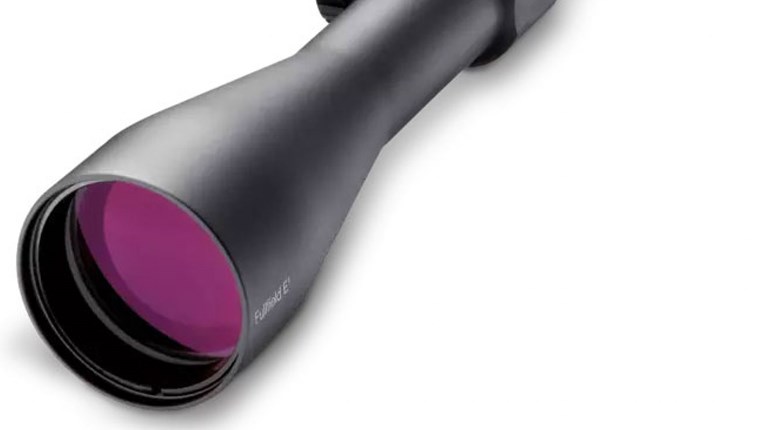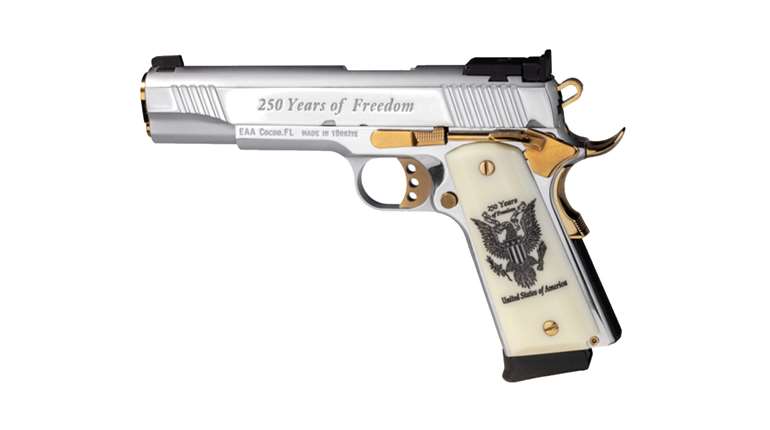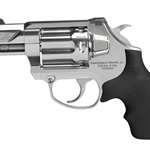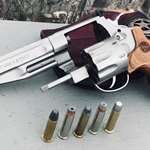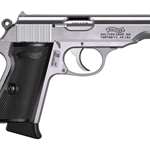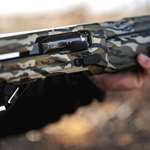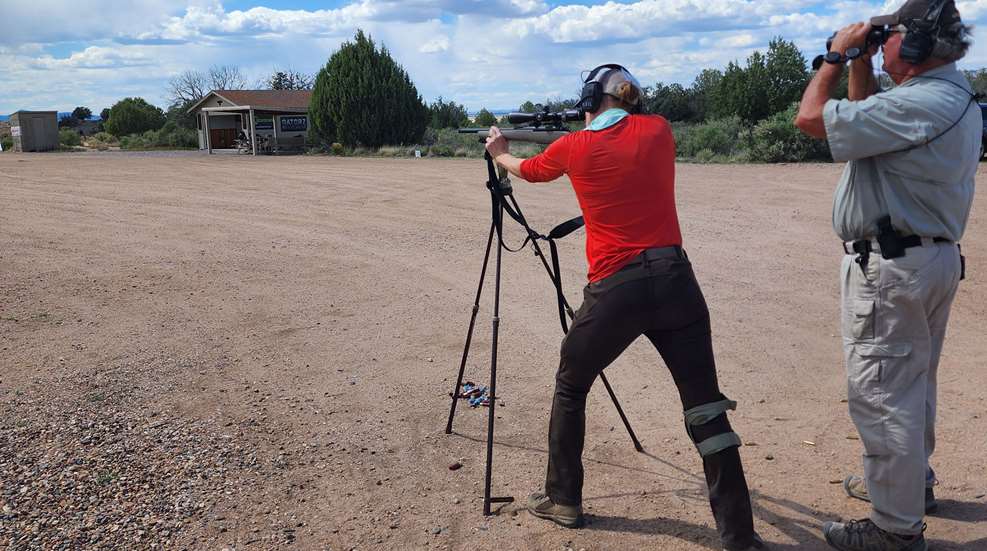
Do you remember Newton’s Third Law of Motion from high school physics class? It states that for every action, there is an equal and opposite reaction. This is exactly what’s happening when you fire a gun and feel recoil. Force is required to propel the projectile out of the barrel, and an equal force comes back in the opposite direction: The gun is propelled backward into your hands, shoulder, face or whatever else is in contact with it. The amount of this force is fixed by the laws of physics; it cannot really be reduced. What we CAN reduce, however, is how you feel that recoil, which we call “felt recoil” or “perceived recoil.” Things like recoil pads in the buttstock, a heavier overall gun weight, barrel porting and more can reduce how much of the actual recoil gets translated to your body, but you can also help manage it by holding the gun properly and standing properly. Try the following tips.
1. Be Sure Your Gun Fits You
This is important with rifles and to a smaller extent, with handguns, where a too-large grip can make a gun overall hard to handle. But gun fit is especially important with shotguns. You can shoot a rifle that doesn’t fit you well by cheating a little with your mount and how you move your face on the stock to see through the scope. But with a shotgun that doesn’t fit you, you’ll have to mount it outside the shoulder pocket, too high or too low, just to hit targets. I promise you don’t want a shotgun recoiling against the sensitive tissue inside and under the shoulder pocket, and you don’t want it banging against your upper arm all day, either. In addition, your face will get bruised where the shotgun hits your cheek if it doesn’t fit you properly and you’re using a “cheat mount.”

Using a strong grip by maximizing hand-to-gun contact (put your hand as high as possible on the grip) will help you manage a handgun’s recoil.
2. Get a Good Grip
A handgun that has too large a grip for your hands will be hard to get a proper grip on, and this makes the gun harder to control. The less control you have over any gun, the less able you are to manage its recoil properly. Get a smaller grip or an overall smaller gun if you need to.
Holding a handgun properly will help you control its recoil, which in turn will reduce muzzle flip and help you get a second, accurate shot off quickly. Check out this article for tips on a proper handgun grip.
3. Adopt an Aggressive Stance
These tips were taught in a recent hunter prep course I took at Gunsite Academy, as applied to rifle shooters standing up shooting off-hand or using tall shooting sticks. But they also apply to handgun shooters and defensive shotgun shooters (competitive clay target shooters and wingshooters will use different stances).
How you stand affects felt recoil. An aggressive stance utilizes more of your body to soak up recoil, not just your hands or your shoulder. Prone is good for this, as your entire body is lying down behind the gun ready to absorb recoil. But when you’re standing, you can adopt an aggressive stance by utilizing the following tips:
- Square your chest, core and hips to the target. This means that you’ll be facing the target directly head-on.
- Take a medium-sized step back with your dominant-side foot so that your feet are about shoulder-width apart, with your front knee bent and slightly more of your weight on your front foot. You don’t want your feet so far apart or so close together that you’re tippy. When I shoot, my toes are probably 15 to 18 inches apart—a little farther if I’m using sticks that are a bit short so that I have to lean down into them.
- Point both feet toward the target as long as you can do so relatively comfortably. Try to avoid having your feet bladed to the target or pointed to the side.
- Re-square your hips and chest to the target if moving your feet caused you to pivot.
- Lean forward from the hips slightly, again, keeping a bit more of your weight on the front foot.
4. Now, Test It
This aggressive stance is great for managing recoil because it is quite stable. Your feet are diagonal from each other, spread out front to back and left to right, which makes you stable in all directions. Your torso is slightly forward, and because you have a little more of your weight on your front (support side), you’ll be able to quickly push off with your rear foot and move if you need to.
If you have someone willing to help you test this, you can see how much more stable this shooting position is than just standing facing the target with your feet together or side by side. Have someone give you a gentle shove from the front (almost like recoil will be). Notice how your chest-forward stance and your back foot help balance you; you’re not easily pushed over. The same is true side-to-side to a lesser extent.
This stance is helpful for managing recoil, but it’s also called a “fighting stance” for the same reason—it will help you stay on your feet if you’re charged, bumped or shoved in a confrontation.
5. What Not to Do
What you want to avoid is leaning backward, which is a very common mistake new shooters make. When they hold a heavy gun out in front of them, they want to lean back to help counteract that weight. That might feel good when you’re standing there holding the gun, but once you fire it and get pushed back by the recoil, you’ll see how unstable it is. Because you’re already leaning back, the recoil just has its way with you and you’re unable to hold firm against it.












